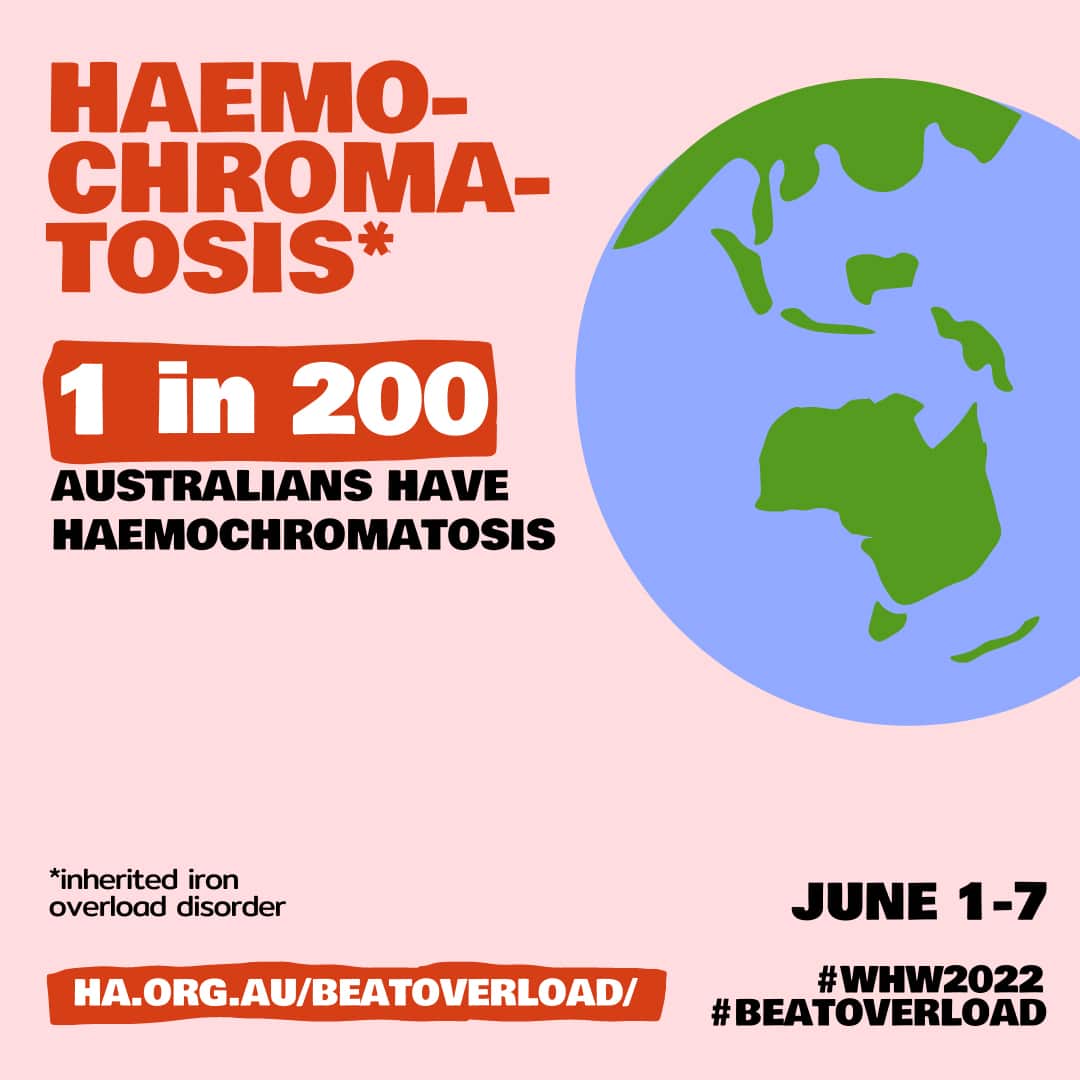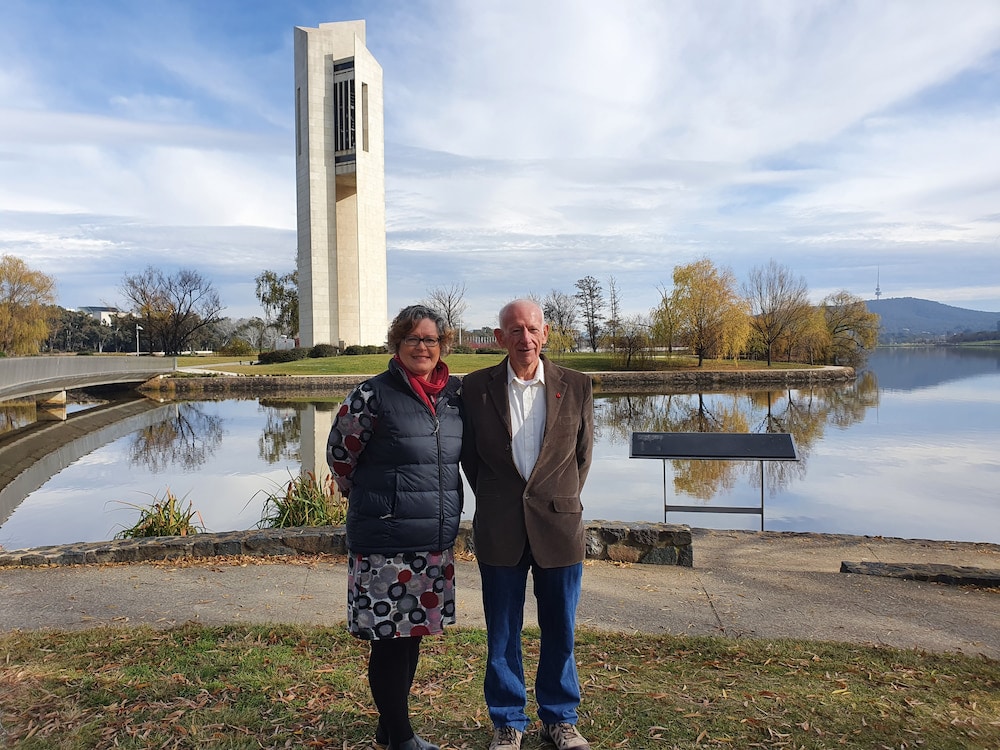Questacon, Telstra Tower, and the Royal Australian Mint will be glowing red tomorrow night, Wednesday 1 June, and more Canberra landmarks will light up on 6-7 June to raise awareness of inherited iron overload disorder, known as haemochromatosis.
From 1 to 7 June, more than 90 well-known buildings and landmarks around Australia will be turning red during World Haemochromatosis Week to raise awareness of the disorder, which can affect organs and lead to premature death if left undiagnosed and untreated.
According to Haemochromatosis Australia (HA), haemochromatosis is one of the most common genetic disorders in Australia, with one in 200 Australians affected, and one in seven carrying a mutation of the defective gene. Although relatively common, it often goes undiagnosed.
More than 100,000 Australians are at greater risk of developing liver cancer, arthritis, diabetes, and other chronic conditions because of undiagnosed haemochromatosis.
Canberra locals Jeff Hobson and Karin Calford both volunteer for Haemochromatosis Australia after having been diagnosed with the disorder, and spoke with Canberra Daily ahead of World Haemochromatosis Week in 2021.
Mr Hobson said when he first presented to the doctor with concerns 30 years ago, he was diagnosed with Hepatitis C due to the similarity of symptoms.
“It’s fair to say back then they didn’t know a great deal about it and it’s only in the last three or four years that I’ve noticed a significant change,” he said.
He explained the genetic disorder is often left undiagnosed due to its non-specific symptoms, which can include fatigue, joint pain and abdominal pain.
According to Haemochromatosis Australia, it’s because of such non-specific symptoms that those living with haemochromatosis often aren’t diagnosed until aged in their mid-40s, suffering ill health as a result.
Ms Calford said that people often talk about iron deficiency but ignore the other end of the spectrum because there isn’t enough community knowledge about the disorder.
“It’s the general community that’s not aware of it,” she said.
“It certainly is well known in terms of the medical profession. I mean we know how to diagnose it; we know how to treat it; we know how to manage it. It’s just a matter of making sure that those things are done in an appropriate and timely way.”
If diagnosed early, the treatment for haemochromatosis is simple, safe and effective. It consists of regular removal of blood, known as venesection, usually by giving blood at Red Cross Blood Bank – which also provides a benefit to others.
Mr Hobson said illuminating iconic buildings in red is an important opportunity to draw attention to haemochromatosis and the risk of inherited iron overload across Australia and worldwide.
“Part of the symbolisation is the lighting up of various venues and buildings with the colour red to signify the blood, the iron component and the build-up and storage of iron, which then goes on to cause issues if it’s not addressed and taken under control,” he said.
Ms Calford said the main message of World Haemochromatosis Week is not for people to fear the disorder but for the public to know that diagnosis and treatment is simple.
“It’s really well worth talking about this condition because every time we detect a person when they’re still well and healthy, it means there’s an opportunity to detect other people or family members that may also be impacted by this.
“Prevention is definitely the cure,” she said.
Canberra landmarks lighting up red for World Haemochromatosis Week 2022 include:

- Questacon (1, 6-7 June)
- Royal Australia Mint (1 June)
- Telstra Tower (1 June)
- Canberra Times Fountain (6-7 June)
- John Gorton Building (6 June)
- Light Rail Stops (6-7 June)
- Malcolm Fraser Bridge (6-7 June)
- National Carillion (6 June)
- Old Parliament House (6 June)
For more information about World Haemochromatosis Week, visit haemochromatosis.org.au
To raise funds, HA has organised a 7-day virtual balloon race – to beat iron overload based on real weather conditions – with lift-off from Sydney Harbour Bridge on 1 September. Tickets $5; entries close 31 August. Details here.
To find out more about the condition, call Haemochromatosis Info Line on 1300 019 028.



